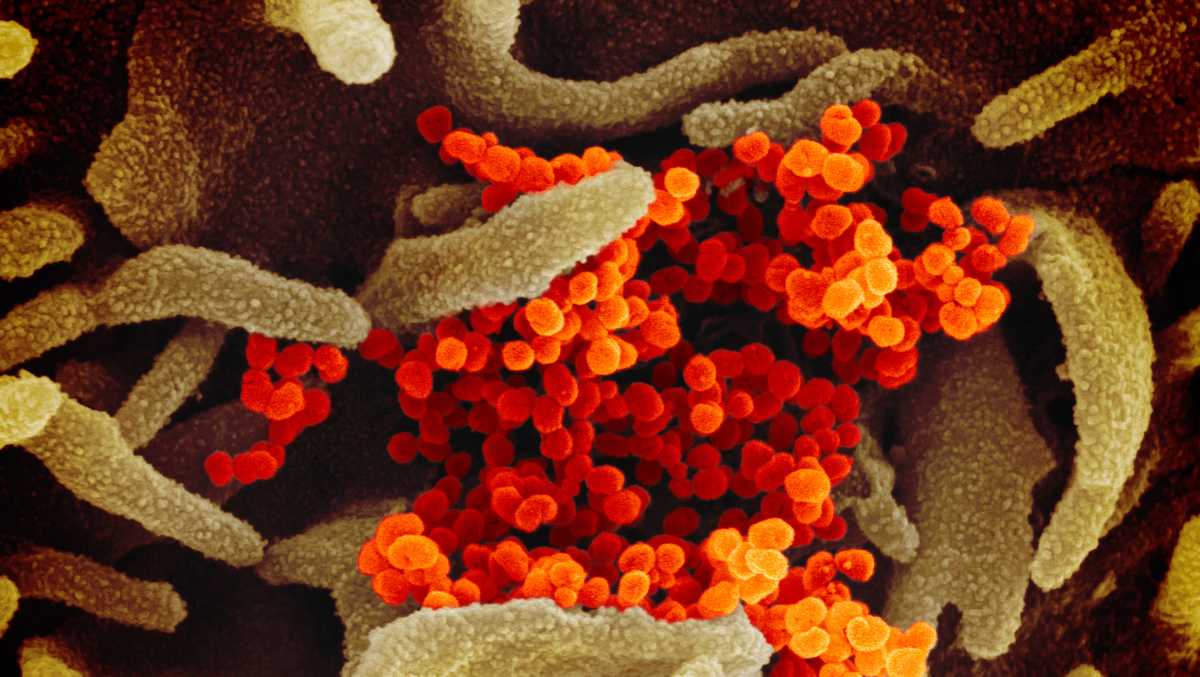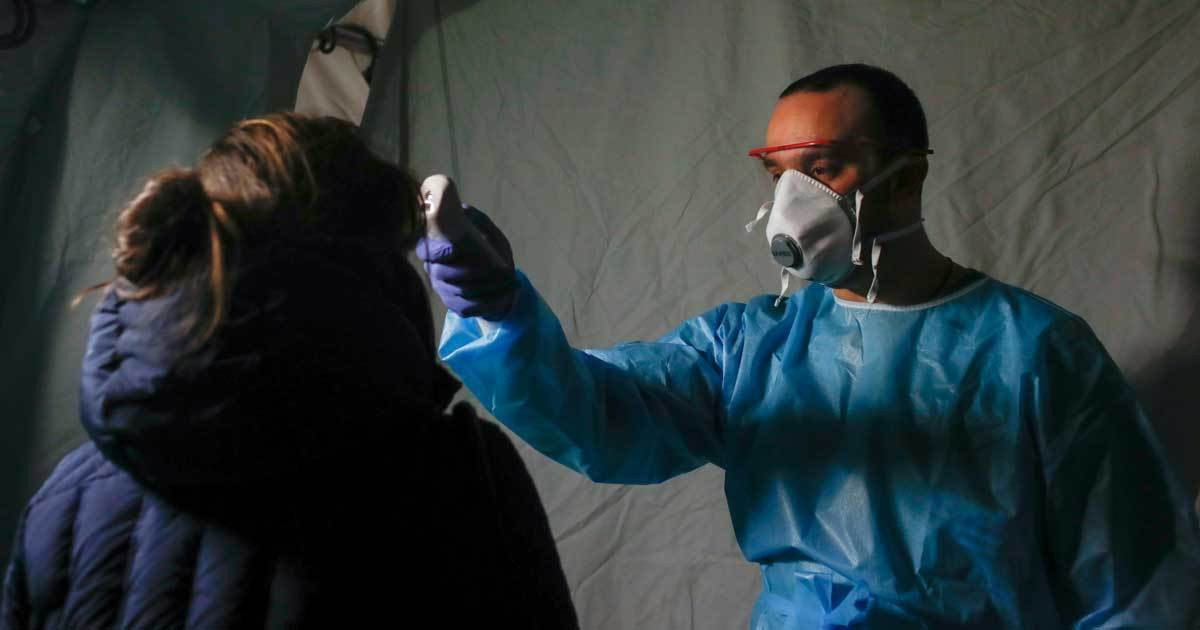In a striking contradiction to White House assertions that the coronavirus is under control, the Pentagon's chief of personnel is sharply warning that the virus poses an increased "threat" in areas where US troops and defense personnel are located around the globe.

www.cnn.com
(fair use applies)
US military scrambles to cope with global 'threat' posed by coronavirus
By Barbara Starr and Nicole Gaouette, CNN
Updated 12:48 AM ET, Sat February 29, 2020
In a striking contradiction to White House assertions that the coronavirus is under control, the Pentagon's chief of personnel is sharply warning that the virus poses an increased "threat" in areas where US troops and defense personnel are located around the globe.
In a February 25 memo, Matthew Donovan, who is filling the top personnel job on a temporary basis, informed the military's most senior leaders that as the novel coronavirus continues to spread, it is "an increasing force health protection (FHP) threat in areas where Department of Defense (DoD) personnel live and work."
CNN has learned that top US commanders around the globe are increasingly concerned that as allies shut down borders and travel in response to the virus' spread, there's a risk that by the end of March, US military readiness may start degrading, according to several defense officials.
The military leaders' concerns and Donovan's memo are the latest signs that the virus is becoming a national security challenge. It is affecting the military, curtailing diplomats' movements, straining global supply chains and shaking the US economy, which saw stock markets drop more in the past week than they have since the economic crisis of 2008.
Rapid response
A key joint military training exercise has been canceled in South Korea, while the Pentagon is sending additional medical and lab personnel, doctors and nurses to support US forces on the peninsula.
Navy ships that have stopped at Pacific ports recently have been ordered to stay out at sea for two weeks in a self-quarantine to allow time to observe whether any sailors have picked up the virus. A US service member in South Korea has tested positive for coronavirus, and US Forces Korea confirmed the service member's spouse has also tested positive. Four total US Forces Korea-related individuals have been confirmed to have the virus.
At US Army installations in Vicenza, Italy, commanders have restricted access to public areas such as church, gyms and childcare centers and ordered extra Meals Ready to Eat in case they have to quarantine.
In the Middle East, United States Central Command, which overseas operations and bases there, has canceled all liberty and leave.
With coronavirus now present in 55 countries, infecting almost 84,000 and killing nearly 3,000, the Trump administration's fitful, uncoordinated response is raising questions, particularly among public health and security experts who note that just last year, the intelligence community and the White House flagged the need to prepare for the disruptive risk of a major disease outbreak.
"If you go and look at the National Biodefense Strategy, the National Security Strategy or the new National Defense Strategy, any one of those documents point to this and acknowledge that these outbreaks have the potential, if not managed properly, to be destabilizing," said J. Steven Morrison, who directs the global health policy center at the Center for Strategic and International Studies.
"They can overwhelm society, overwhelm health systems, have crippling economic consequences and stability issues, they can obviously strike at [military] readiness, trigger mass migration," Morrison said.
The national security risk of a disease outbreak is highlighted on page eight of the Trump administration's National Security Strategy. The intelligence community's Worldwide Threat Assessment, issued January 2019, said that the US and the world "will remain vulnerable to the next flu pandemic or largescale outbreak of a contagious disease that could lead to massive rates of death and disability, severely affect the world economy, strain international resources, ... increase calls on the United States for support" and destabilize fragile states.
Other intelligence assessments note that "the relationship between disease and political instability is indirect but real," and that US military forces deployed in support of humanitarian and peacekeeping operations in developing countries are at highest risk.
Greg Treverton -- a former chair of the US National Intelligence Council, an office within the US intelligence community -- said that during one exercise a decade ago to evaluate the level of various threats, including terrorism, the only one that ranked as "existential" was a pandemic. "The national security implications are potentially very big," said Treverton, a founder of Global TechnoPolitics Forum conference, which partners with the GeoTech Center from the Atlantic Council, a nonpartisan think tank.
"It has already wreaked havoc with markets and supply chains -- that has national security implications because the economy is critical," Treverton said.
Disruptions to US military and diplomats -- America's eyes and ears overseas -- are already clear.
The State Department has been raising restrictions on US government employees in China since late January and has ordered the departure of all family members under the age of 21. In February, the department allowed for the voluntary departure of US government employees and their families from Hong Kong.
One administration source tells CNN there are currently discussions about ordering the departure of some US diplomats and their families in South Korea and Japan, but no final decision has been made.
In Asia, two US diplomats tell CNN they haven't been told about those very early stage talks, but are on edge, waiting to see not only how the virus spreads, but how their host countries and Washington respond. There is concern about the economic impact on US businesses if the White House moves to restrict travel from Japan or South Korea to the US, the diplomats tell CNN.
Government messaging both to employees and the broader public is an essential part of a national security response, said Nada Bakos, a national security expert and former CIA analyst.
"A pandemic can induce fear-based individual behavioral changes, similar to reactions to terrorist attacks and not all behavior changes are productive," Bakos told CNN, adding that clear, transparent communication about risks and prevention can "make a big difference in how accurately a threat is perceived."
"The public can't adequately prepare without clear guidance and confidence in their government," Bakos said. "Without clear communication, political stability is stressed and the situation can spark violence between authorities and citizens. Failure to utilize national security frameworks to address a pandemic may have severe human and economic costs."
Treverton said that while he thinks "the administration has done OK," President Donald Trump "by being so Pollyannaish about it, I think he hasn't prepared people for what might come."
'This is moving pretty quickly'
Defense Secretary Mark Esper told the House Armed Services committee Wednesday that US Northern Command has been put in charge of synchronizing the department's Pandemic Influenza and Infectious Disease plans, coordinating with other commands to assess potential impacts.
Esper also said that he has not yet held talks about whether the Defense Department will need additional funding from Congress to meet the coronavirus threat, saying he would have to discuss that with the combatant commanders first.
"This is moving pretty quickly," he told lawmakers.
Already, US military planners are quietly trying to figure out if the regular rotations of tens of thousands of personnel can take place this spring and summer, a routine occurrence that could be complicated as countries begin to shut down their borders.
Trump seeks a 'miracle' as virus fears mount
Thousands of personnel worldwide usually change assignments mid-year, often as soon as the school year ends. If they and their families cannot readily travel overseas to new jobs, and troops currently overseas cannot rotate, this could lead to further turmoil and uncertainty in the military personnel system officials say.
Chairman of the Joint Chiefs of Staff Gen. Mark Milley assured the House committee that the department is "taking all the appropriate measures right now," adding that estimates of the situation were underway. "We owe you some answers," Milley said.
Not waiting
But field commanders are not waiting to request supplies or take action.
Approximately 70 additional US military medical personnel -- doctors, nurses and medical technicians -- will now deploy to US installations in South Korea, one official said. They will provide clinical care and laboratory support, but their main mission will be to help test military, dependents and contractor personnel for the coronavirus once test kits arrive from the CDC.
Several officials say it still is not clear when those kits will arrive even though the outbreak in South Korea has grown in recent days.
Liberty -- the ability of troops to leave their bases -- is being heavily restricted in the Persian Gulf region by US Central Command. Steps by host countries in the Middle East are also affecting US troops.
With the land border heavily restricted between Iraq and Kuwait, all resupply of forces in Iraq will now be done by air.
And more than 60 US personnel who traveled to Israel for an exercise to train against regional threats such as Iran began returning to their bases in Europe on Friday at the request of the Israeli government, although none of them were reported to be ill.
The head of US European Command, Air Force Gen. Tod Wolters, told the Senate Tuesday that they are carefully monitoring the infection's impact and anticipate an increase of coronavirus cases in Germany that could lead to restricted troop movement. The lockdowns in Vicenza could be extended as well, he said.
Major exercise under threat
In addition, the virus could affect the Pentagon's decision to proceed with a lengthy upcoming exercise, involving as many as 20,000 troops training against a Russian threat.
Privately, defense officials say that as these long-planned US military exercises are postponed or canceled, troops will be less up to date on critical training for future operations. Publicly, Pentagon officials are not discussing details of how training and operations could be impacted.
A specially commissioned National Intelligence Estimate in 2000 identified exactly this kind of fallout. Possibly the first to look at the threat posed by infectious outbreaks, it predicted that, "these diseases will endanger US citizens at home and abroad, threaten US armed forces deployed overseas, and exacerbate social and political instability in key countries and regions in which the United States has significant interests."
Morrison told CNN that for the past few decades, national security professionals have recognized that the dangers of infectious diseases have been growing, a dynamic, the intelligence community's 2019 threat assessment also noted.
That report said tenuous improvements to global health security -- which the administration has moved to defund -- "may be inadequate to address the challenge of what we anticipate will be more frequent outbreaks of infectious diseases because of rapid unplanned urbanization, prolonged humanitarian crises, human incursion into previously unsettled land, expansion of international travel and trade, and regional climate change."
Morrison pointed to health scares such as SARS, Ebola, swine flu and Zika that have erupted in the last few years.
"The more that the global economy gets interconnected, the higher those consequences become," Morrison said. "We can predict to some degree we're going to see these [events happen] with greater frequency, higher velocity and come with a higher human and economic impact."





www.kcra.com










www.propublica.org





 www.winterwatch.net
www.winterwatch.net



